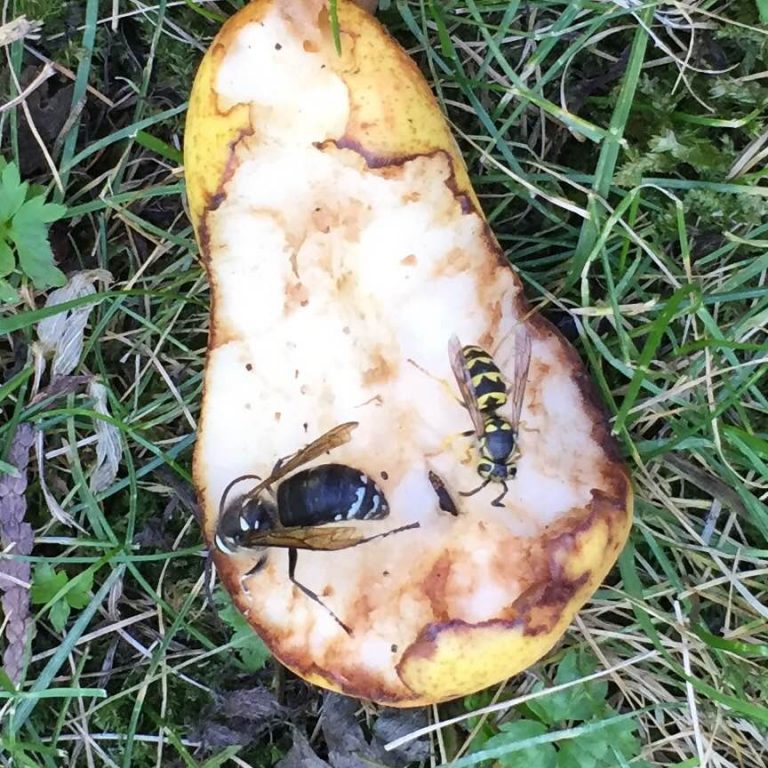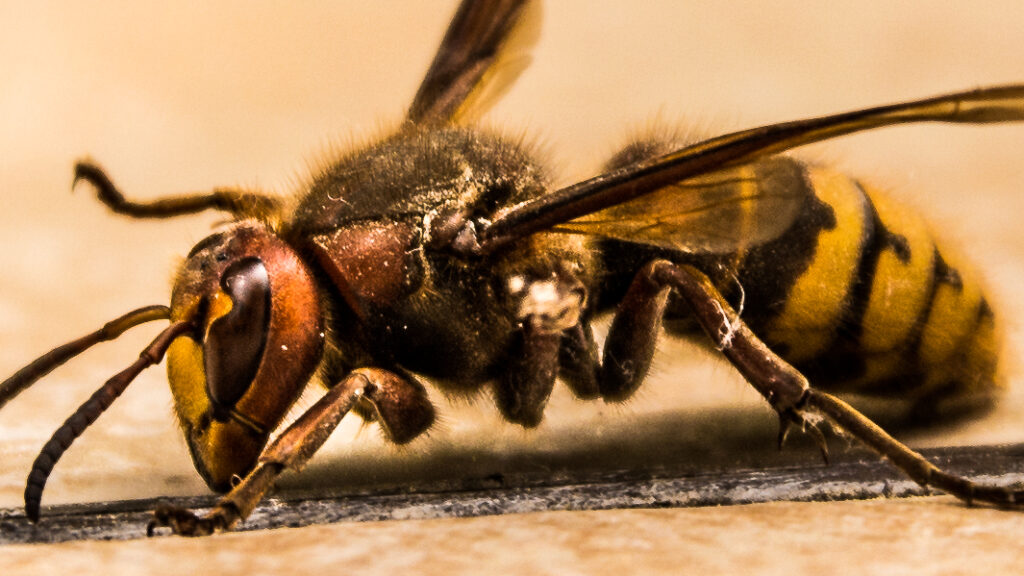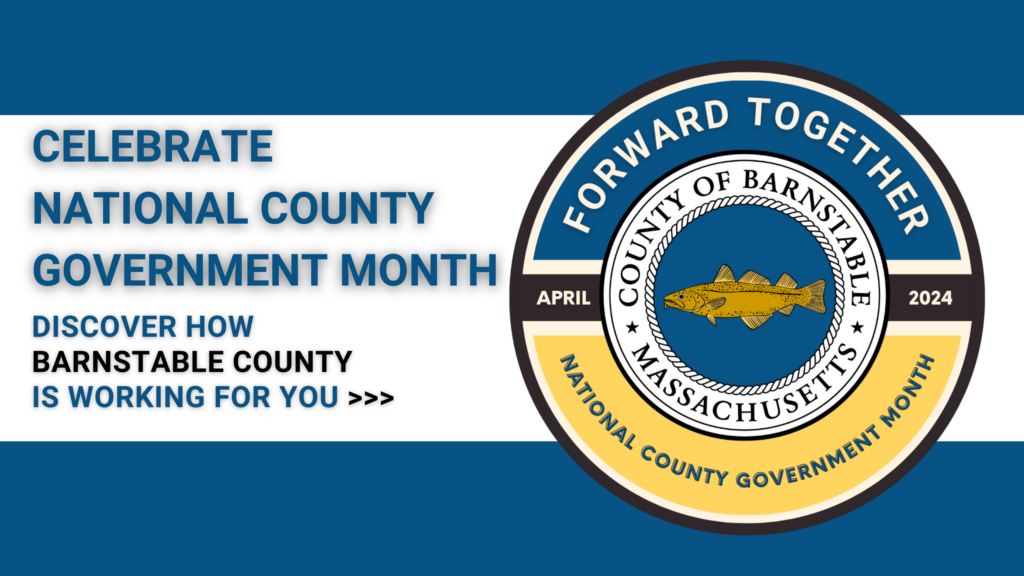
Late Summer on Cape Cod – It’s a Waspy Business
~A note from Larry Dapsis, Extension’s County Entomologist
I get calls from people about insects or ticks on a year-round basis. People may take note of a large paper nest in a shrub or on the eave of their house. Also, some people find that they cannot sit outside to enjoy food or a beverage without a confrontation with yellowjackets. The question is “what is going on and how does it get fixed?”.
OK, let’s start with those football shaped nests. Those are bald-faced hornets, actually a type of yellowjacket. While you may just notice them now, those nests were actually initiated last April/May. They are about an inch long with black and white coloration and very defensive attitudes. I generally tell people that, if they can, give them space until the fall when new queens will be produced. Once the queens emerge, they leave and find a place to overwinter, typically under tree bark. The remaining workers will die from starvation or first frost. The nest is not reused.
But what if the nest is in shrub where people could get too close? Two options: For brave do-it-yourselfers there are wasp and hornet sprays that shoot about 20 feet. I recommend doing this at night when they are all back in the nest. Second option is to call a professional pest control company, who will treat and remove the nest.

Similarly, yellowjackets initiated nests last spring. Queens start nests underground, usually in an abandoned rodent burrow. Nests are at their peak now with about 400 workers. From spring up to about this point they have been hunting insect prey to feed their kids (larvae). Prey are less abundant now but they are really looking for sugar which could be from the soda you might be drinking or mature fruits like tomatoes, apples, grapes, etc.
Again, if you know where the nest is and can avoid it, great. But many times, nests might be under a set of stairs or the edge of a shed. Some people are highly sensitive to the sting of a yellowjacket. They are responsible for most of the stinging deaths in the US.
We also have European hornets. They look like a very large yellowjacket. They mostly nest in tree cavities. About four years ago when the “murder hornets” were found in Washington state I immediately started receiving calls…they were European hornets. Murder hornets, or Asian giant hornets are formidable being about 2 inches long! They will never take up residence on the Cape. Their natural habitat is temperate rain forest.

As I always tell people every creature has a place in this ecosystem. Yellowjackets and hornets are highly beneficial with the number of insects they consume. As a biological pest control, wasps and hornets provide a very valuable service to the gardener – for free. If you can tolerate their sometimes-irritating behavior, they are well worth having around. After all, the enemy of my enemy is my friend!
If you have any questions about what’s buzzing around your yard, feel free to reach out to me at ldapsis@capecod.gov or submit your questions at my website website, www.capecod.gov/bugs. Feel free to attach a video or picture file!



